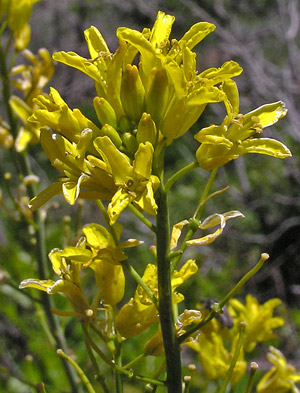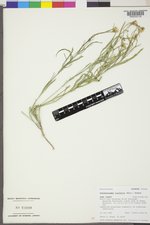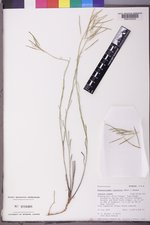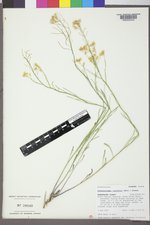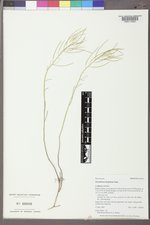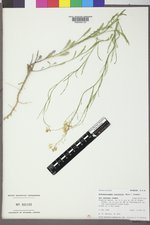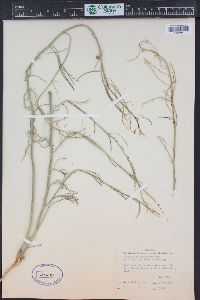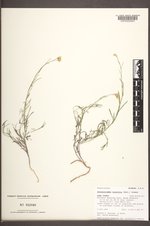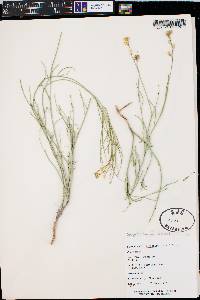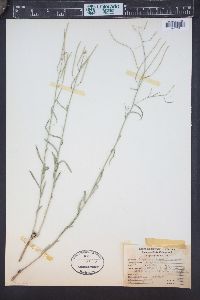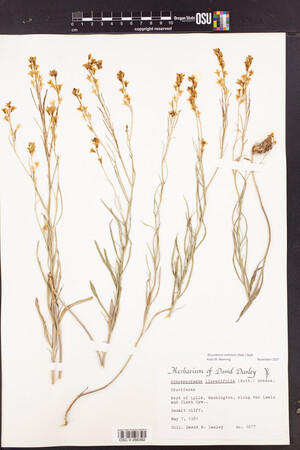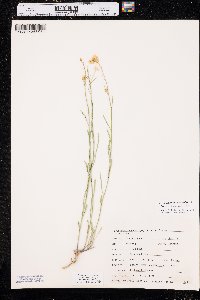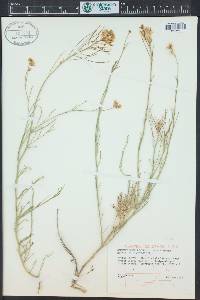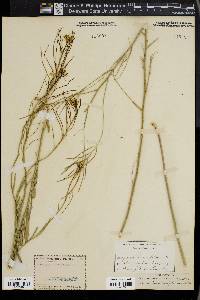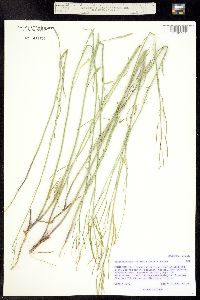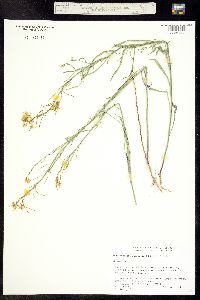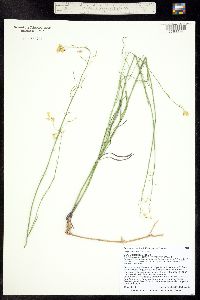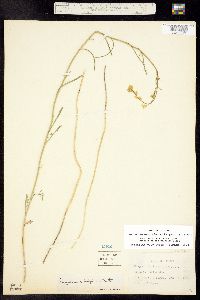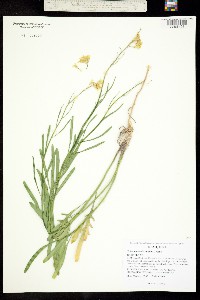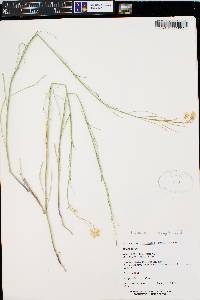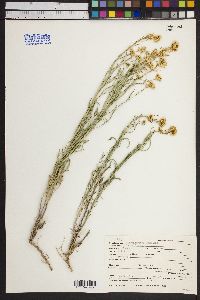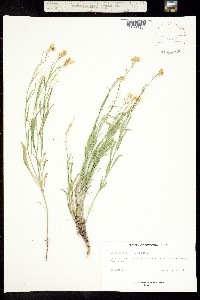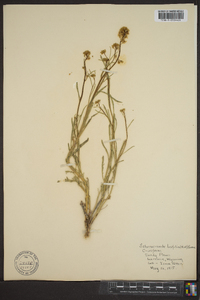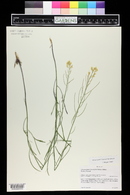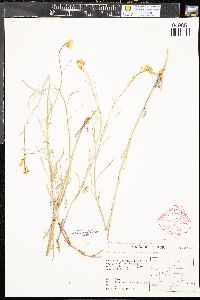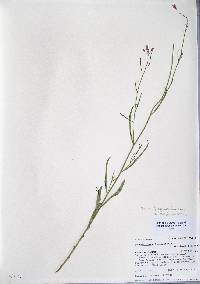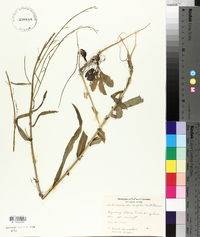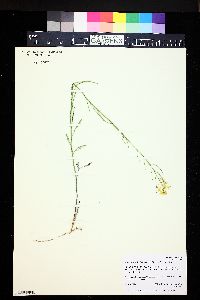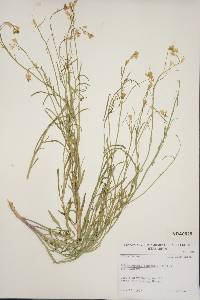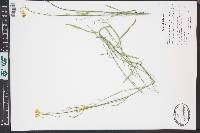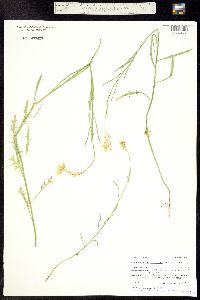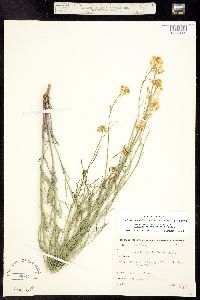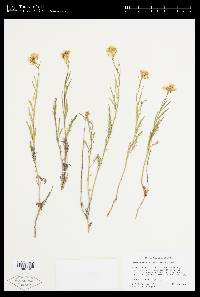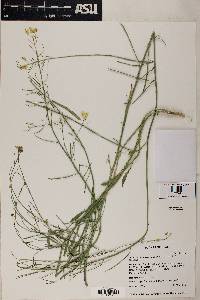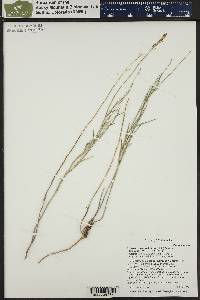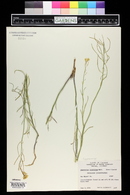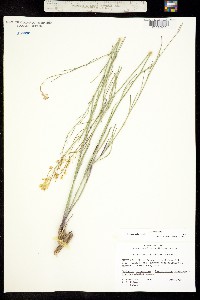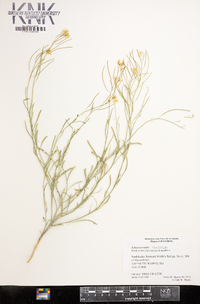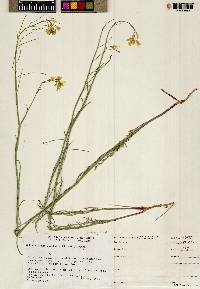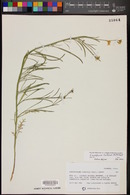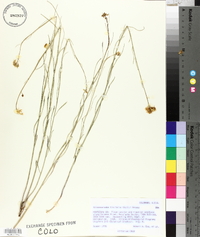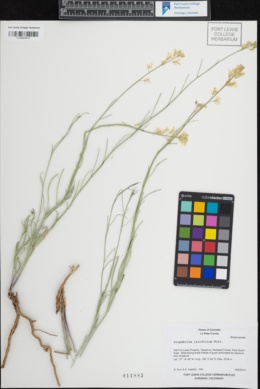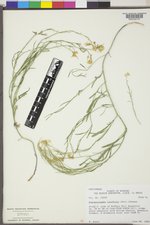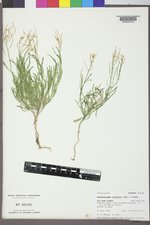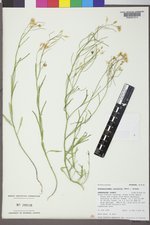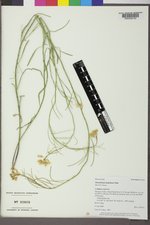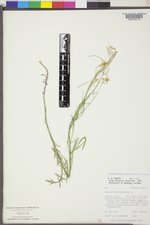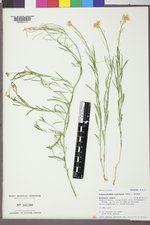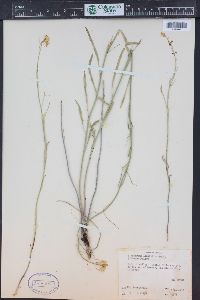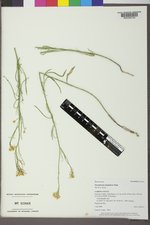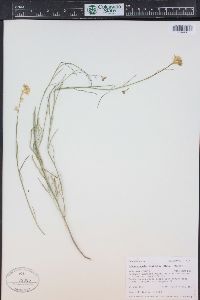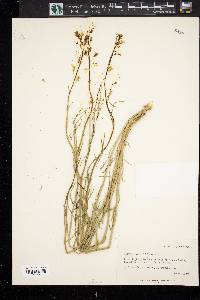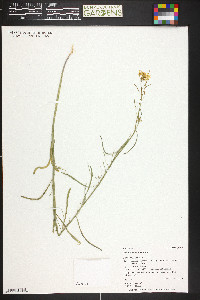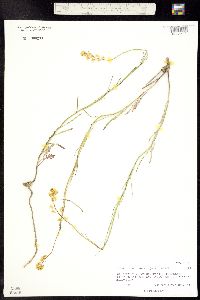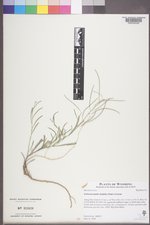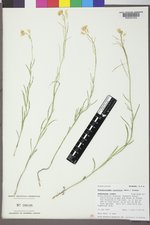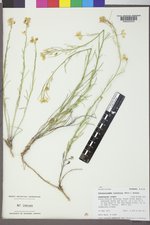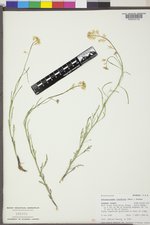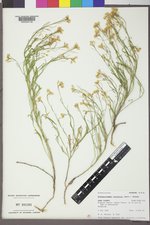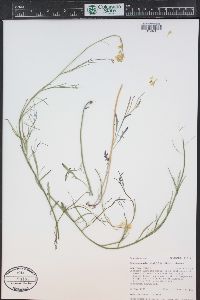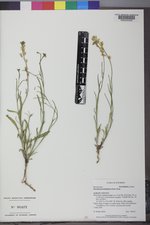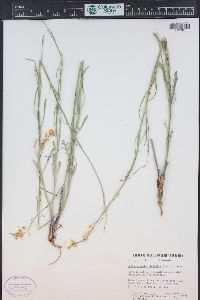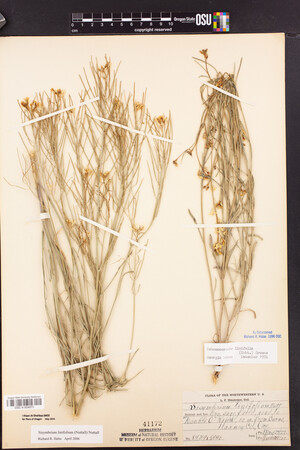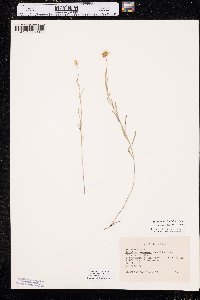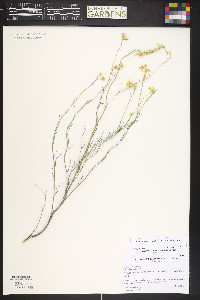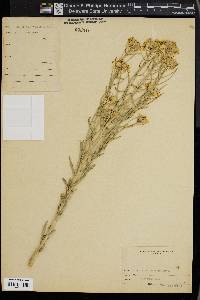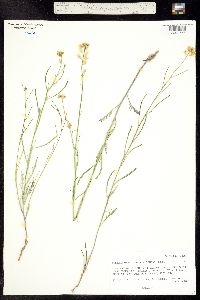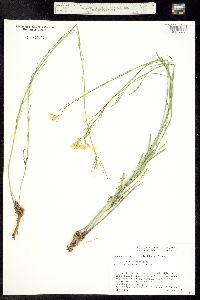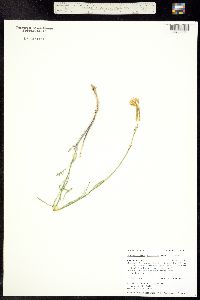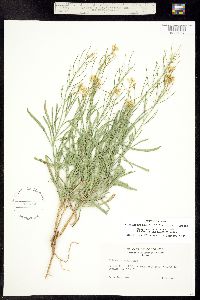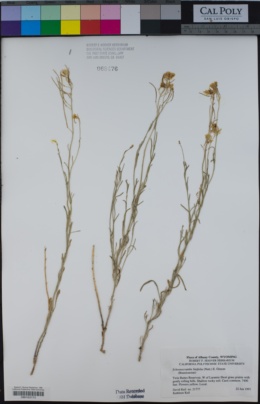Sisymbrium linifolium
|
|
|
|
Family: Brassicaceae
flaxleaf plainsmustard, more...Salmon River Hedge-Mustard, rush mustard
[Erysimum glaberrimum Hook. & Arn., moreSchoenocrambe linifolia (Nutt.) Greene, Schoenocrambe pinnata Greene] |
Perennials; (rhizomatous); usually glabrous basally, rarely sparsely pubescent, glabrous (and sometimes glaucous) distally. Stems erect or ascending, unbranched or branched (few) distally, (1.5-)3-7(-11) dm, glabrous distally. Basal leaves (soon withered); not rosulate; petiole (proximally) (0.5-)1-3 cm; blade similar to proximal cauline, 1.5-6 cm, margins entire, pinnatifid or pinnatisect; lateral lobes oblong to linear, 0.5-2.5 cm × 0.3-1(-2) mm, margins entire. Cauline leaves sessile or shortly petiolate; blade usually filiform to linear, rarely oblanceolate, 1-2.5-9(-12) cm × 1-3.5(-5) mm (smaller distally, base attenuate or cuneate), margins usually entire, rarely dentate or pinnately lobed. Fruiting pedicels divaricate to ascending, slender, narrower than fruit, (3-)5-9(-11) mm. Flowers: sepals ascending, oblong to oblong-linear, (3-)4-7 × (0.8-)12 mm; petals spatulate, (6-)8-12 × (1.5-)2-4 mm, claw 2-5 mm; filaments (yellowish), (4-)5-7 mm; anthers linear, 1.5-2.5 mm. Fruits (divaricate to erect), narrowly linear, smooth, slender, (2.5-)3.5-6.5 cm × 0.9-1.2 mm; valves glabrous; ovules 60-94 per ovary; style 0.5-1 mm; stigma prominently 2-lobed. Seeds 1-2 × 0.4-0.6 mm. 2n = 14. Flowering Apr-Aug. Rocky or gravelly hillsides, sagebrush communities, pinyon-juniper areas, shady rock cliffs, abandoned fields, sandy prairies, steep banks; 700-2800 m; B.C.; Ariz., Colo., Idaho, Mont., Nev., N.Mex., Oreg., Utah, Wash., Wyo. N. H. Holmgren (2005b) recognized Sisymbrium linifolium and others (see 86. Hesperidanthus) in Schoenocrambe even though the molecular evidence (S. I. Warwick et al. 2002) overwhelmingly shows that the latter is nested within Sisymbrium, whereas the species of Hesperidanthus are not closely related. Indeed, I. A. Al-Shehbaz et al. (2006) placed Hesperidanthus and Sisymbrium in different tribes. This is an example where the superficial resemblances in fruit morphology are the result of convergence and can easily mislead to erroneous taxonomy.
FNA 2010, Allred and Ivey 2012, Heil et al. 2013 Duration: Perennial Nativity: Native Lifeform: Forb/Herb General: Perennial herbs, 15-100 cm tall, usually from rhizomes; stems erect to ascending, unbranched or sparingly branched above the middle; herbage mostly glabrous and glaucous, occasionally sparsely pubescent near the base. Leaves: Basal leaves petiolate, early-withering; stem leaves alternate, sessile or shortly petiolate; blades 1-6 cm long, pinnately lobed near the base of the plant and linear to filiform near the top of the plant. Flowers: Yellow, in terminal racemes that elongate in fruit; pedicels ascending in flower and spreading to ascending when in fruit, 3-11 mm long, slender, narrower than fruit; sepals 4, ascending, 3-7 mm long; petals 4 in a cross formation, spatulate, 6-12 mm long, yellow. Fruits: Seed pods narrowly linear, smooth and slender, 3-6 cm long and 1 mm diameter, glabrous; seeds 1-2 mm long. Ecology: Found on rocky or gravelly hillsides, sagebrush communities, pinyon-juniper areas, shady rock cliffs, abandoned fields, sandy prairies, and steep banks, from 2,000-9,500 ft (601- 2896 m); flowers April-August. Distribution: Western US, from BC, WA, ID and MT, south to NV, AZ, and NM. Notes: This native perennial rhizomatous Sisymbrium has yellow 4-petaled flowers; long thin seed pods on slender stalks; stems and leaves that are mostly hairless and slightly white-waxy (glaucous); and long narrow leaves. The leaves at the base of the plant tend to be pinnately lobed, but those leaves fall off the plant early in the season and the remaining stem leaves are mostly unlobed. Other Sisymbrium spp. also have yellow 4-petaled flowers and long slender seed pods; however, all other North American Sisymbrium spp. are annuals. S. irio and S. altissima are fairly common in the southwest; in addition to being annual, both species differ from S. linifolia by having pinnately lobed stem leaves. There have been multiple nomenclature changes in this group, so be careful. This species has previously been classified in the genus Schoencrambe as well as several other genera. The pink-flowered Hesperidanthus linearifolia has also been previously been called by the alarmingly similar names Sisymbrium linearifolium and Schoencrambe linearifolia. Try not to confuse the pink flowered H. linearifolia and the yellow-flowered S. linifolia when using older sources, as they are two entirely different species. Ethnobotany: Unknown, but other species in the genus have uses. Etymology: Sisymbrium is from sisymbrion, an ancient Greek name referring to a number of different mustards; linifolium means line-shaped leaves. Editor: AHazelton 2017 |

